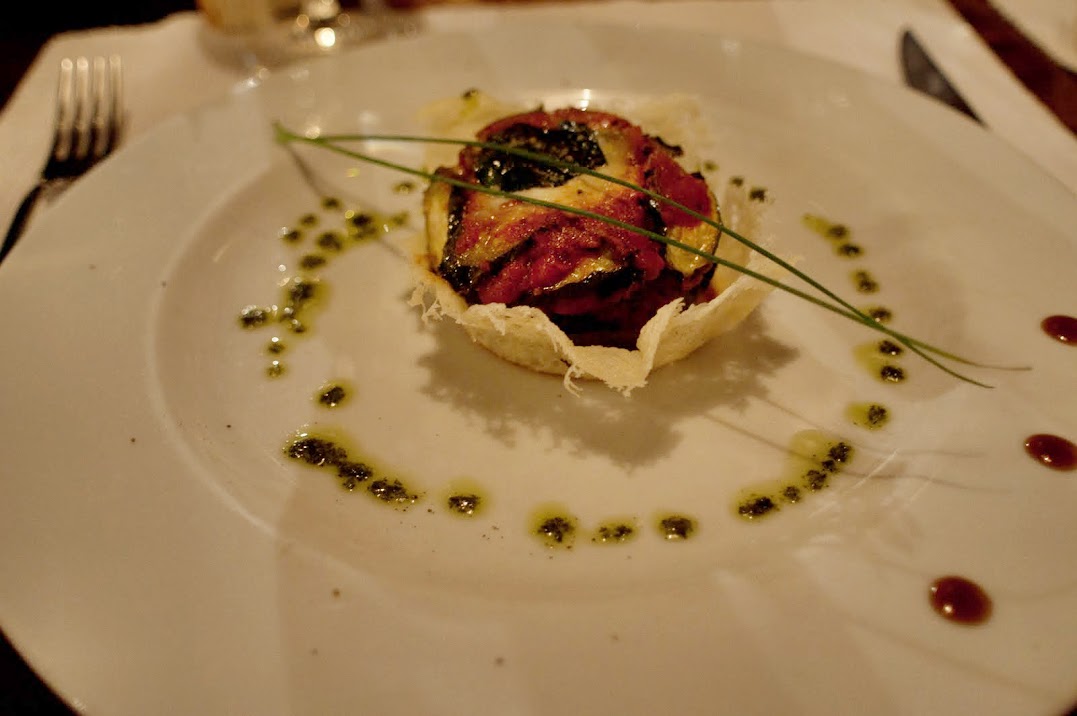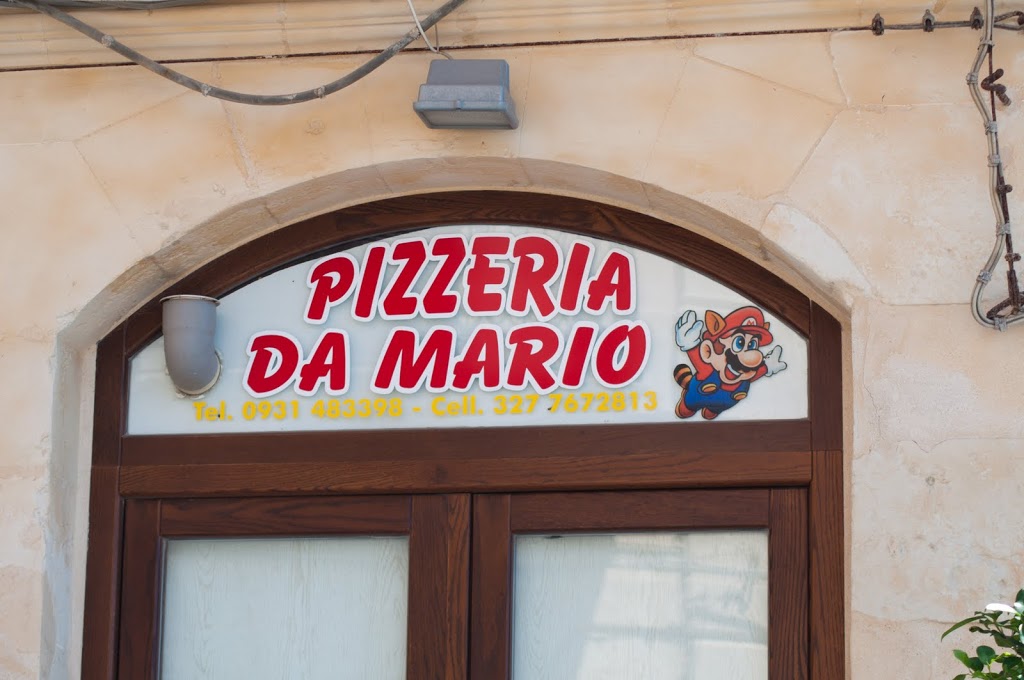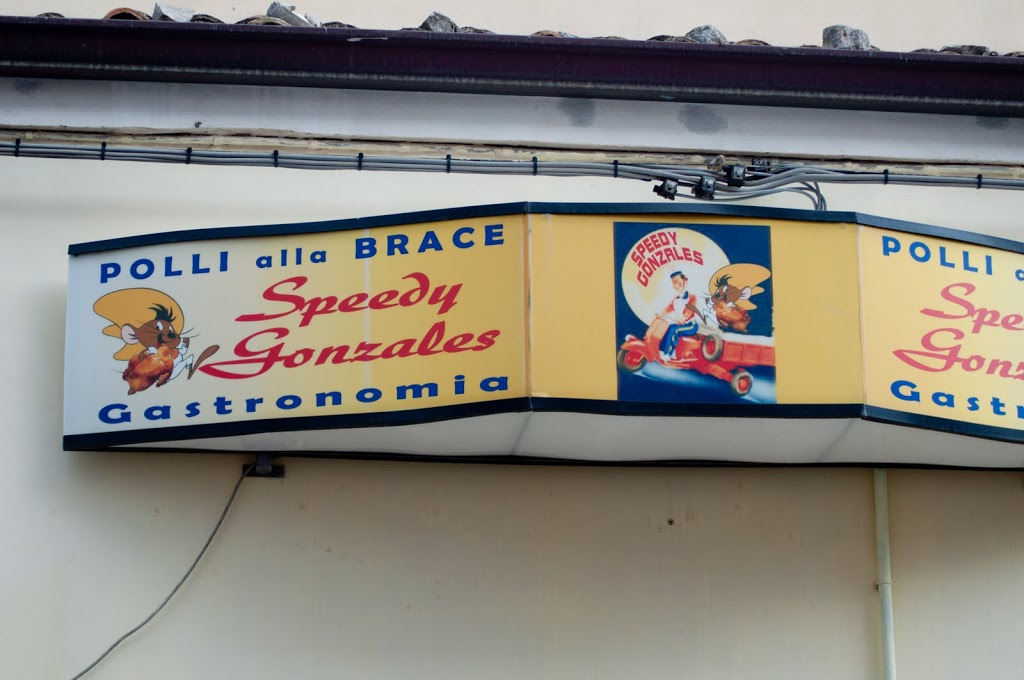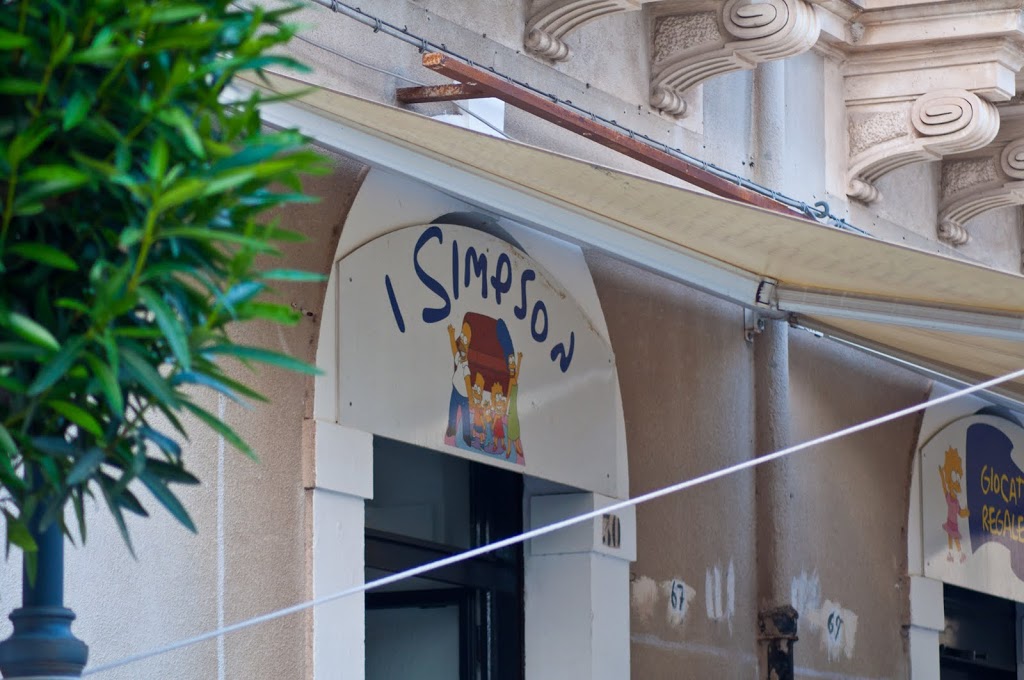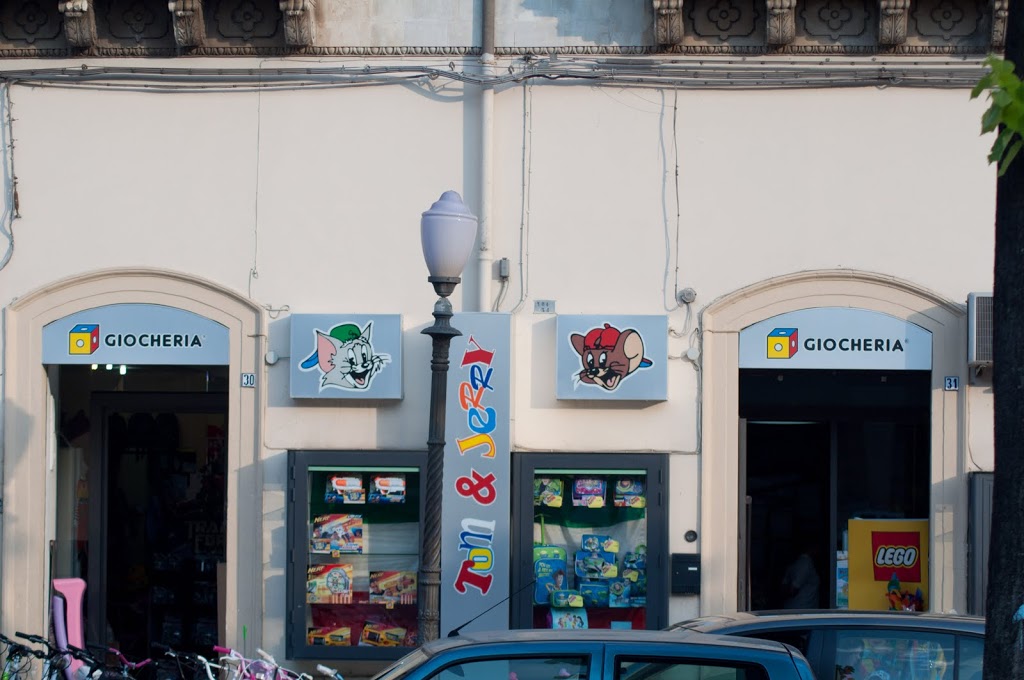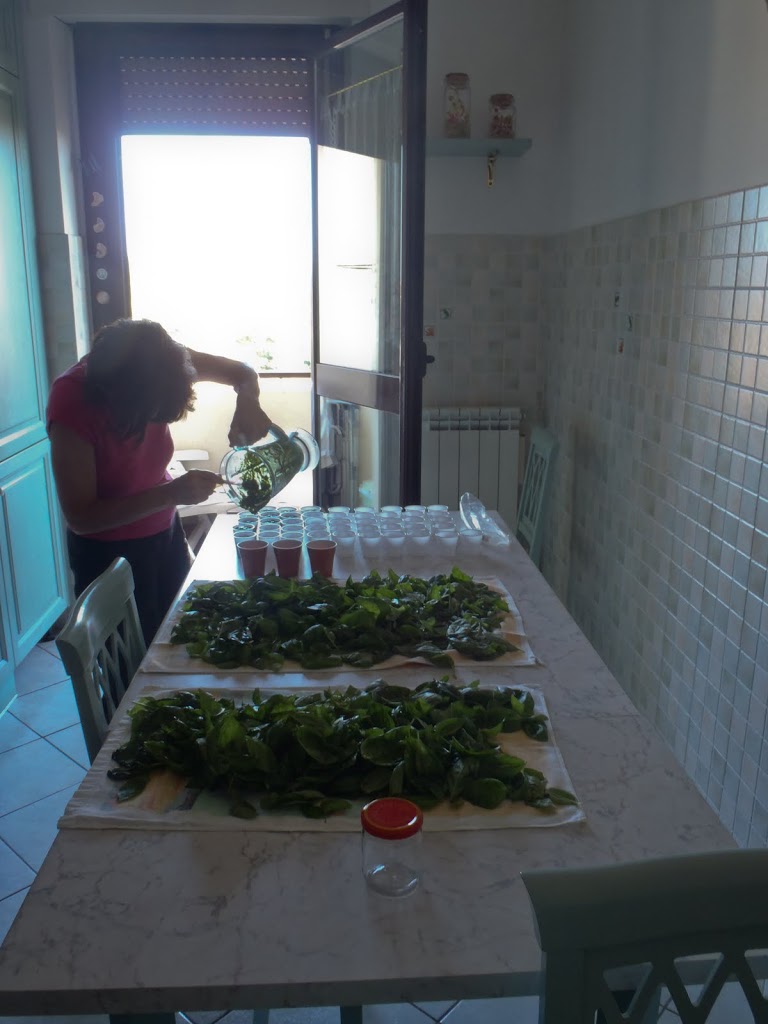Growing up Italian-American, I though I knew Italian food pretty well, but each year that I live in Italy, I consider myself more and more “American”.
The first thing to note about Italian food is how diverse it is. Some people will ask, “don’t you get tired of eating Italian every day?” They don’t understand that inside Italy, the Italian food is much less homogeneous than it is outside Italy. Similar to how Americans think it’s strange to group pizza and hamburgers, but in other countries it makes sense because it is all “American Food”. Or how a Chinese person might think it is terrible to but all the different types of foods that we pile on our plates at a Chinese Buffet on the same dish, but to us it’s normal because it’s all Chinese Food.
The first way Italian Cuisine is divided is by region. Nearly every restaurant associates itself with the regional origin of the proprietor. This may be obvious with a full-on theme, matching name, and scenes on the walls all evoking the region associated with the food. Or it might be very subtle and easy to miss if you are not Italian. Italians will immediately recognize characteristic foods on the menu and file the place away in the “Umbria, “Sardinia”, or whatever part of their brain.
Each region having a strong identity plays a roll in Italian culture in general. For example, they know what region any given celebrity or politician is originally from. By contract, I could tell you a couple famous people from my own home state, but have no idea where nearly any given celebrity comes from, even super-famous A-Listers.
The regional origins of foods play a big roll, bigger than one would expect given that it’s 2014 and Italy is just not that big. An American from the Northeast for example, will have an easier time finding a Canoli back home than in mainland Italy – they are from Sicily. The unsalted bread of Umbria is very different from the focaccia of Puglia, which in turn is surprisingly similar to Genova (Puglia mixes the toppings into the bread dough, Genova leaves them on top), but none of which resemble the cracker-like bread of Sardinia. Oh, and don’t expect any butter or oil, the bread is eaten dry or along with the meat course. Also being brought some when you sit down is definitely not a given and certainly not for free.
The next way food, particularly in restaurants, is divided is by specialty. Similar to the US, there are places that specialize in fish, beef, hand made pastas, local foods, a particular experience, on and on. Certainly there are more places specializing in fish in Sicily (an island) than there are in Umbria (land locked), but you find similarly run sea food restaurants up and down all coasts. Independent fishmongers are still very common all over Italy, and some have opened their own adjoined restaurant, cooking themselves their catches for customers. This same style restaurant can be found from Genova.
I know three specialty vegetarian restaurants here in Rome, and they all have menus very different from the “Bisteccherie” (Steak Houses) near our home. While a few of these places might also serve pizza, they don’t have the offerings of an actual “Pizzeria”. A pizzeria is normally a more casual place that serves a variety of pizzas, maybe a calzone, and some fried appetizers. There is also the “creperia”, which (you guessed it) serves crapes. You can get pastries at a “Pasticceria”, gelato/ice cream at a “Gelateria”, and fried foods at a “Friggitoria. As the “aperitivo” or “Happy Hour” has spread south from Torino (aka Turin) and Milan, there are also places that specialize in that. And more and more types of specialties beyond what I can even think of.
That is just the “Italian Food”. Italy may not have as many Mexican restaurants as the US (we have less Mexican immigrants) and our Asian choices are well illustrated here by The Oatmeal. But there are still lots of non-Italian options: Ethiopian, Indian, Turkish (there is a kebab and falafel place on almost every corner), Chinese, Japanese, Korean, sushi, German, Brazilian, and yes, Mexican. They are normally a bit Italianized, which is weird because I’m used to my food being Americanized, but that’s what one can expect. These are still not as big a presence as all the Italian options, though. When Italians ask me about American food I like to explain to them that when an American asks another “what do you feel like for dinner?” the standard way to reply is to name a county. I think that sizes up “American” food pretty succinctly.
Suffice it to say, when we are thinking of going out to eat here in Rome, we are not headed to your typical “Italian Restaurant” as seen in about every city in the world, which offers a margarita pizza, veal parmigiana, chicken parmigiana, penne alla vodka, fettuccine alfredo, minestrone soup, bruschetta, tiramisu, and maybe a hand full of other “typical” Italian dishes that are not nearly so typical here in Italy. In fact, I can’t even remember the last time I even saw someone eat one of those dishes, probably back in the States.
One last way that food serving establishments are divided by their level of service. There is obviously a big difference from the white-table-clothed, fancy location, high end service type of restaurant that you may find on the ground floor of a five-star hotel, from the grab-and-go place where you pick up your food at the counter. In English we might just say that a place is more or less fancy, Italian has specific words for each type. At the top is the “Ristorante” with table service, table cloths, and general high-end feeling. Then there is the “Trattoria” which feels a bit less stuffy, perhaps less ornate a location, but still good service. After that is the “Osteria” which definitely does not feel formal, but still has table service. Followed by the “Tavola Calda” where one picks up their ready-made food at the counter.
The prices and service go down from Ristorante to Tavola Calda. However, the quality does not! When one reminisces about how great the food is in Italy, they really mean how easily accessible and affordable great food is in Italy, because you can get great Italian food in any city if you are willing to make reservations and pay for it. I can hardly drag my husband to any place to eat in the US which has table-cloths because he insists you are paying for the table-cloths and the food is actually lower quality. While not true in the US (you normally have to pay more for the higher quality ingredients needed to prepare high quality food), this is surprisingly accurate in Italy. Though your best bet for avoiding high prices and bad food in Italy is to simply stay away from the big tourist crowds.
There is something to the idea that the quality of food is better in Italy. Artiginal (“artigianale”) is what’s expected as the norm and taken seriously. Even in the home, the food served will often be “from my own/my friend’s garden” or a specialty from a particular region gifted from a friend. My father-in-law gives us special sweet lemons from a friends of his who was born in Almalfi. He also gives us fresh dry-it-yourself oregano from Calabria that has changed the way I think about oregano. Heck, it’s changed my life! Nearly all Italians learn to cook and take pride in their cooking. As well as learn about nutrition and food anthropology in school. I think this keeps the standards on prepared foods high, because if it’s not better than they can make at home or if it’s too expensive, they will just make it themselves.
I could go on about etiquette for ordering at the counter, variety in pizza through out Italy, the rules of the courses, pasta, espresso, taboos! Since this is already a long post, I’m going to break it down into a series. So more to come on Italian food and food culture in the posts to come!

